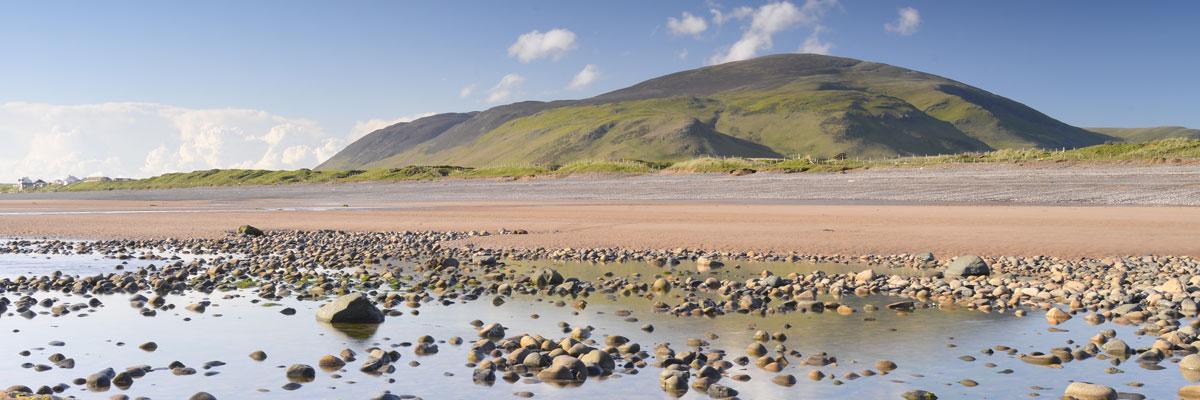The south-western corner of the Lake District is home to two long valleys; the Duddon Valley and Eskdale. The first of these stretches for about 15 miles from Duddon Bridge near Broughton, to the tiny hamlet of Cockley Beck near the head of the valley. Perhaps because there is no lake here, the Duddon is relatively quiet, but for anyone with a little time to explore, there is much to see.
Tucked away in the hills, 2 miles west of Duddon Bridge is Swinside Stone Circle, also known as Sunkenkirk. This impressive Neolithic monument has many similarities to the more famous stone circle at Castlerigg near Keswick, but standing about 1 mile from the nearest road gives Swinside a quieter, more ancient atmosphere.
In the Duddon Valley itself, and within easy reach of its little lane, are a couple of favourite places worth stopping to see. The first are the waterfalls just north of the village of Seathwaite; these are a series of pretty little cascades, running for about 200 yards close to the road. About 2 miles further north is Birks Bridge. This 200 year old stone bridge spans a miniature, rocky gorge with the crystal-clear waters of the river flowing below.
At the top of the Duddon Valley, the little road forks left and right: to the right the road leads east over the Wrynose Pass to Little Langdale and Ambleside. To the left (west) is the famous, or perhaps notorious, Hardknott Pass. At a gradient of 1 in 3 (33%), this is one of the steepest roads in England; with hairpin bends on the steepest sections, this is something of a white-knuckle ride even for confident drivers.
The Hardknott Pass leads over into the neighbouring valley of Eskdale. On the western side of the pass is one of England’s most evocative Roman ruins, Hardknott Fort. The fort was located here to defend the road between Ambleside and the coast at Ravenglass; it was occupied for almost 100 years until the early 3rd Century AD, with many of the soldiers coming from what is now the Balkans.
Besides Hardknott Pass, Eskdale is also famous for its narrow-gauge railway, the Ravenglass and Eskdale Railway, fondly known as La’al Ratty. Originally opened in the 1870s to carry iron ore down to the main line at Ravenglass, this narrow-gauge steam railway was also soon carrying passengers as well. Today the track runs for just under 7 miles, with a total of 9 stations on the route, all through some of the best mountain scenery.
The village of Ravenglass stands on the estuary of the River Esk. In a rather curious arrangement, the Esk shares its estuary with two other rivers, the Irt and the Mite, creating a natural harbour sheltered by a ridge of sand-dunes. This harbour has been of great importance, particularly to the Romans whose navy used it as a supply point for their military operations in Cumbria, including the western end of Hadrian’s Wall. Hidden amongst trees just south of the village are the meagre remains of a major fort; the most obvious structure here is the ruined bathhouse whose walls still stand to a height of 4 metres.
Just up the valley from Ravenglass stands Muncaster Castle, the historic home of the Pennington family. Although much of the castle as it now appears is Victorian, the building incorporates a fortified tower which dates back to the 13th Century. Today the castle is famous for its Hawk and Owl centre, and for its annual Jester competition in honour of Tom Skelton whose portrait hangs in the castle; he is believed to be the original Tom Fool.
Eskdale and the Duddon Valley are separated by a long, wide line of hills, which, at its southern end culminates in the great domed summit of Black Combe (height 600m). This is where the mountains meet the sea; the Lake District is famous for its landscapes of lake and mountain, but less well-known is that the National Park also includes 12 miles of coastline here. Arguably, the best beach is at Silecroft where a wide stretch of sand is revealed at low tide. There are stables nearby, and the beach is popular for horse-riding.

